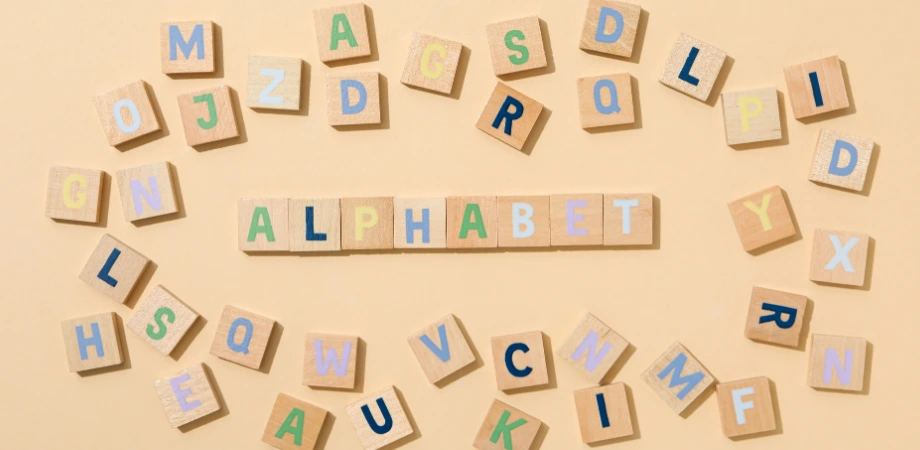The world is rich with diverse languages, each represented by unique writing systems. From the Latin alphabet used in English to the Cyrillic script in Russia and the intricate characters of Chinese, understanding these writing systems is essential for global communication. For businesses and individuals seeking accurate translation services, knowing the nuances of the different types of alphabets can make a significant difference. Each alphabet has its own rules and complexities, making it important to explore these systems to appreciate the cultural and linguistic diversity they represent.
The Evolution of Writing Systems
The evolution of writing systems is a fascinating journey that traces the development of human communication from ancient symbols to the modern alphabets we use today. Throughout history, different societies have created various systems of writing to represent spoken language, each tailored to their unique cultural needs. This evolution led to the creation of different types of alphabets, each offering a distinct way to record and share information. As globalization continues to connect us, understanding these systems is crucial for businesses offering interpreting services, ensuring effective communication across linguistic barriers.
Different Types of Alphabets
There are many different types of alphabets used around the world, each with its own set of symbols, rules, and historical significance. These alphabets have shaped languages and communication for centuries, from the widely used Latin alphabet to more region-specific systems like the Cyrillic or Hangul. Understanding the variety of alphabets not only helps in learning new languages but also plays a key role in localization services, allowing content to be tailored accurately to specific linguistic and cultural contexts.
Latin Alphabet
The Latin alphabet, also known as the Roman alphabet, is the most widely used writing system in the world. It forms the foundation for many languages, including English, Spanish, French, and German. This alphabet consists of 26 letters and has evolved from the ancient Roman script. As one of the different types of alphabets, it is commonly adapted for new languages, making it a versatile and essential tool for global communication.
Cyrillic Alphabet
The Cyrillic alphabet is used predominantly in Eastern Europe and Central Asia, most notably for Russian, Bulgarian, and Serbian. This writing system was developed in the 9th century by Saints Cyril and Methodius to spread Christianity among Slavic peoples. With its distinct characters, the Cyrillic alphabet represents another important example of the different types of alphabets that are integral to the identity of many nations.
Greek Alphabet
The Greek alphabet is one of the oldest writing systems still in use today, dating back to around the 8th century BCE. It was the first to introduce vowels and has significantly influenced other alphabets, including the Latin and Cyrillic systems. As part of the different types of alphabets that have shaped linguistic history, the Greek alphabet remains vital in both academic and religious contexts, especially in mathematics and science.
Arabic Alphabet
The Arabic alphabet is a central writing system used across the Middle East and North Africa, for languages such as Arabic, Persian, and Urdu. It is written from right to left and consists of 28 letters. This alphabet is an important cultural symbol and, like other different types of alphabets, is crucial for businesses looking to expand into Arabic-speaking markets. Utilizing accurate localization services ensures that content is effectively adapted for these regions.
Hebrew Alphabet
The Hebrew alphabet is used primarily for writing the Hebrew language and has been in use since ancient times. This alphabet, consisting of 22 letters, is written from right to left and is central to Jewish liturgical texts and culture. Among the different types of alphabets, the Hebrew script plays a critical role in religious traditions, as well as in the modern state of Israel, where it is the official language.
Devanagari Alphabet (Used in Hindi and Sanskrit)
The Devanagari alphabet is one of the most widely used writing systems in India and Nepal. It is used to write languages like Hindi, Marathi, and Sanskrit. The Devanagari script features 47 primary characters, including vowels and consonants, and is written from left to right. As one of the different types of alphabets, Devanagari is essential for interpreting ancient texts and for communication in modern South Asia.
Hangul (Korean Alphabet)
The Hangul alphabet is the writing system used in Korea, created in the 15th century by King Sejong to improve literacy among the Korean people. Hangul consists of 14 consonants and 10 vowels, designed to be simple and logical. Among the different types of alphabets, Hangul stands out for its unique phonetic structure, making it one of the easiest writing systems to learn.
Non-Alphabetic Writing Systems
While alphabets are commonly used around the world, there are many non-alphabetic writing systems that serve as the foundation for languages. These systems use symbols or characters to represent words, syllables, or sounds in ways that differ from traditional alphabets. Understanding these systems alongside the different types of alphabets is key to appreciating the diversity of human communication and the various methods societies use to convey meaning through written language.
Logographic Systems (e.g., Chinese Characters)
Logographic systems are writing systems where each symbol represents a word or a meaningful part of a word. The most prominent example is Chinese characters, where thousands of symbols are used to represent concepts and ideas. Unlike the different types of alphabets, where each letter represents a sound, logographic systems require memorization of a large number of characters. This system has had a profound influence on East Asian languages and continues to play a crucial role in Chinese, Japanese, and Korean writing.
Syllabaries (e.g., Japanese Kana)
A syllabary is a writing system in which each symbol represents a syllable, a combination of consonants and vowels. The Japanese language uses two syllabaries: Hiragana and Katakana, known collectively as Kana. These systems simplify writing by reducing the need for many characters, unlike logographic systems or the different types of alphabets. The use of syllabaries in languages like Japanese provides an efficient way to write phonetic sounds and is particularly useful in combining with other systems, such as kanji.
Abugidas (e.g., Amharic)
An abugida is a writing system where each character represents a consonant-vowel combination. Amharic, the official language of Ethiopia, is written in Ge’ez script, an example of an abugida. In this system, the basic consonant symbol changes depending on the vowel sound attached to it. Compared to the different types of alphabets, abugidas offer a more compact way to represent phonetic language structure, particularly for languages with complex consonant-vowel interactions.
How Different Types of Alphabets Influence Language and Culture
The different types of alphabets used across the world have a profound influence on both language and culture. Alphabets shape how languages are written and read, affecting everything from literature and poetry to daily communication. For instance, the introduction of writing systems has helped preserve languages and historical records, allowing cultures to pass down knowledge through generations. The use of different alphabets also reflects cultural identity, as the writing system chosen by a society often carries historical and symbolic significance, intertwining language with national or ethnic pride. Whether alphabetic or non-alphabetic, the writing systems we use influence how we perceive language and, ultimately, our cultural heritage.
Exploring the different types of alphabets and writing systems used around the world reveals the incredible diversity in human language and communication. From alphabetic systems to logographic, syllabary, and abugida scripts, each writing method plays a vital role in shaping the languages and cultures they represent. Understanding these systems not only enhances our appreciation for linguistic diversity but also highlights the importance of preserving these unique cultural expressions for future generations. Whether alphabetic or non-alphabetic, each system contributes to the rich tapestry of global communication.



